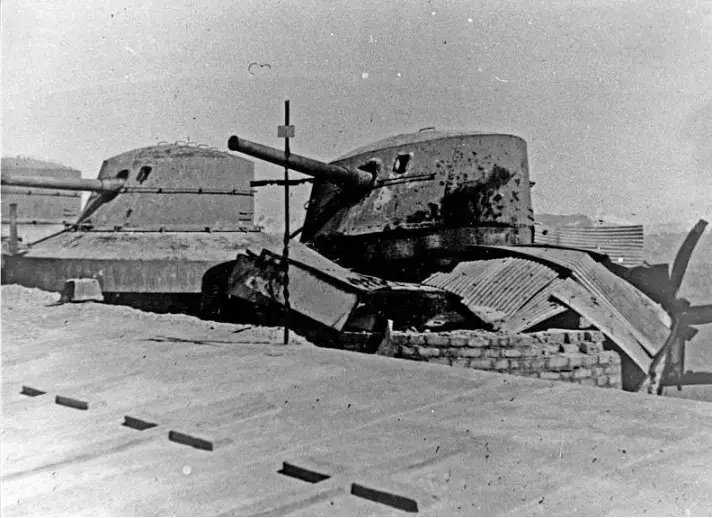
During the short-lived Italian invasion of France of 1940 (also known as the Battle of Western Alps), a curious episode occurred, a battle between fortified positions on mountain tops. The Italian fort on the top of mountain Chaberton (3,130 meters) was the protagonist of such curious battle.
Origin
The design of the fortification dates back to the end of the 19th century, when Italy joined the Triple Alliance with Germany and Austria-Hungary, thus beginning a plan to improve the mountain fortifications on the border with France.
Mount Chaberton was chosen for three reasons:
- Strategic position, guarding an alpine pass between Italy and France
- Difficult to attack given the altitude and surrounding terrain
- It was impossible to hit the position with siege guns of the era, with curved-edge lines of fire
Construction began in 1898, with the realization of a new road up to the top of the mountain. The tip was essentially cut off, making room for a wide flat area that hosted the installations. In 1906 the Fort received eight 149mm cannons (149/35 AM) while in 1910 works were completed.
The height of 3,130 meters made the Chaberton the highest fortified position in the world. The guns’ installation resembled the gun turrets mounted on the armoured cruisers of the era but were only lightly protected. This is because no weapon was expected to hit the area given the high altitude of the installation.
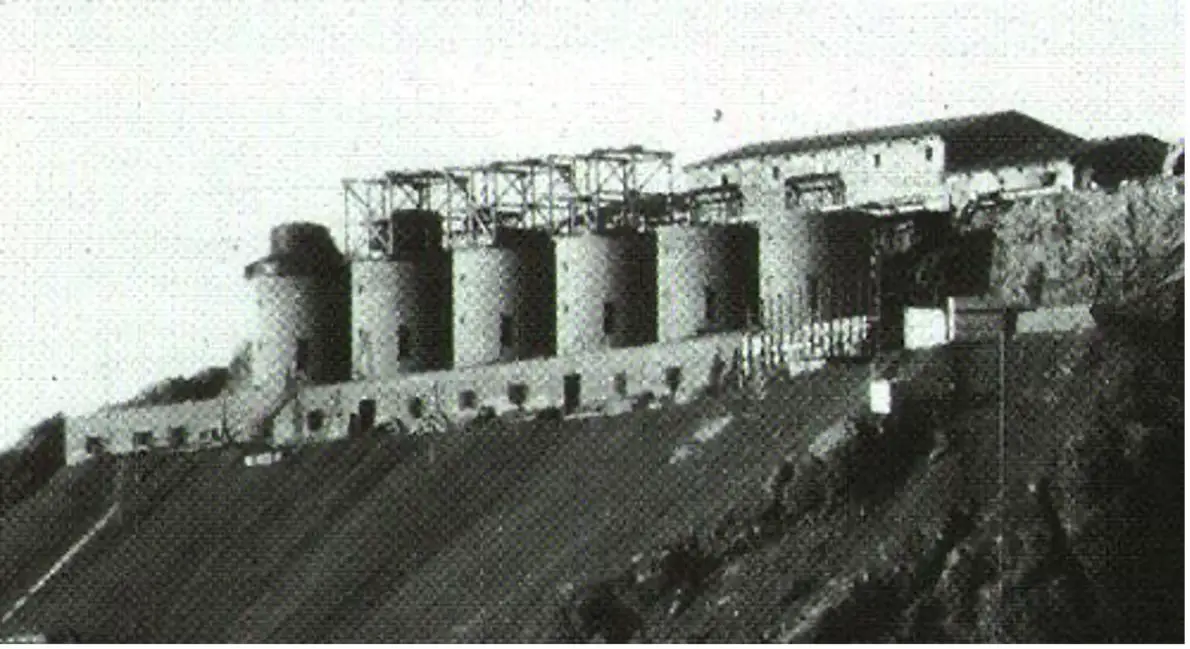
Construction of the fortification
During the Great War, the fort saw no activity and the guns were removed to support the Italian army on the front against Austria-Hungary.
In the interwar years, new weapons became available and thus the vulnerability of the fortification increased, but Chaberton remained a formidable position.
The Battle of the Western Alps
On the 10th of June 1940 Italy declared war on France, the first week of the war saw only naval and air activity and a few border skirmishes, since the Alpine frontline did not facilitate any offensive action. In the afternoon of the 16th of June, an artillery duel erupted between the French Fort Olive and the Italian fort Jaffreau. The commander of the Chaberton requested permission to intervene with his battery and during that day fired around 40 shots against the French positions, silencing their fire against Jaffreau.
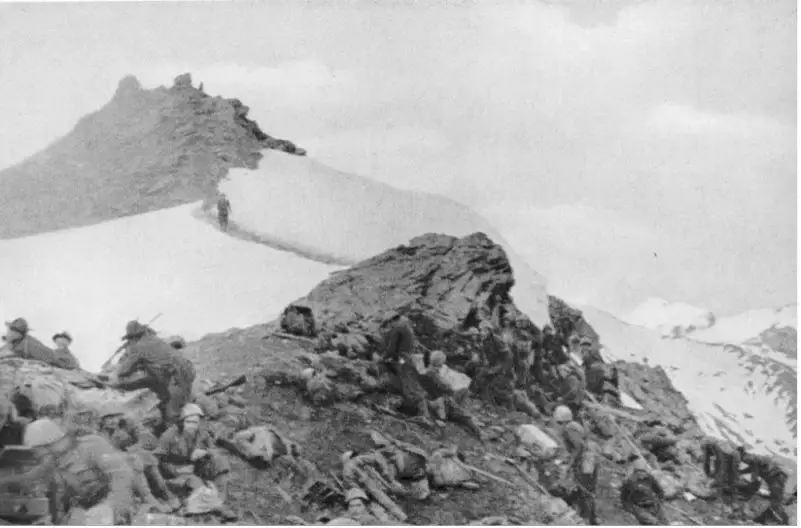
Italian Alpini units during the battle of the Alps
On the next day, Chaberton fired again, this time against Fort Gondran. However, new events were about to unfold. Receiving the news that on the 17th of June, Marshall Petain had sent the request for an armistice to Berlin, Mussolini thought that there was little time left to acquire pieces of French territory. On the 20th of June, he ordered the 4th and 1st Armies, deployed at the Italian-French frontier, to penetrate into enemy territory from the next day. This was clearly another gamble, he hoped for a general moral collapse of the French army which ultimately never came in that sector.
On the 20th, the Chaberton received orders to fire on the French forts Janus, Gondran, Infernet, and Troi-Tetes as well as other positions in the Montgenèvre valley.
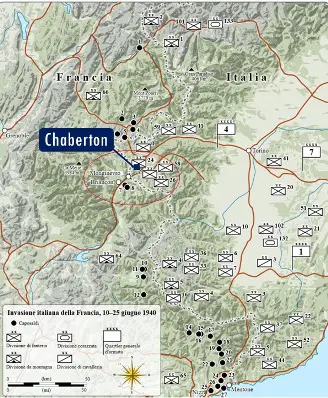
The frontline with the position of the Chaberton
The French were well aware of the threat posed by the 8 heavy guns of the Chaberton, so they quickly brought into action a battery of four Schneider 280 mm (Mod 1914) siege howitzers. In the morning of the 21st of June, the Italian fort was hidden by the fog but around 10:00 AM, the visibility improved, and the French fired their first three shots. The fog soon obscured them once again the Chaberton but those three shots allowed the French to adjust their subsequent fire.
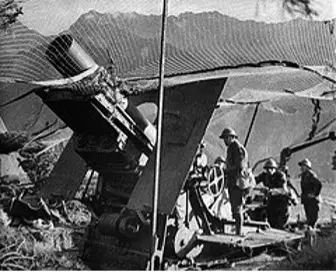
A Schneider howitzer used against the Chaberton
The fog finally dissipated after 3:30 PM and the French resumed firing at the Chaberton, the Italians returned fire but they were unable to observe the exact position of the mortars and thus their fire was not accurate.
At 17:15, Chaberton’s turret n.1 is hit, causing two casualties. Turret 3, 4 and 5 are hit in the subsequent 30 minutes, with splinters penetrating the turret’s armour and igniting fires. After a while, turrets n.2 and 6 are also hit and at 8:00 PM the French cease fire, after having fired 57 salvos at the Chaberton.
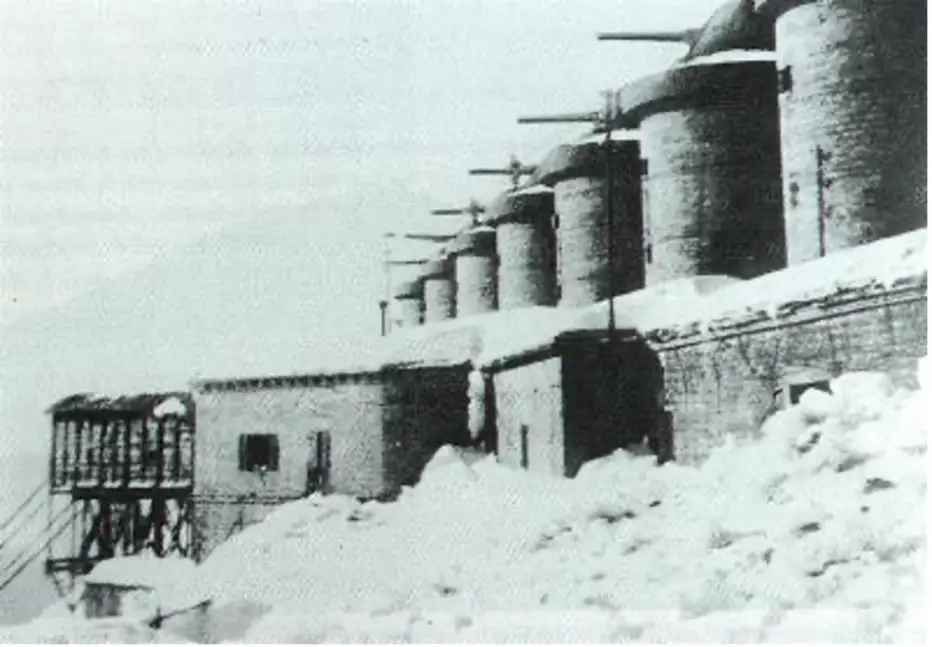
A view of the Chaberton battery
The Italians have suffered 9 dead and 50 wounded. On the 22nd of June, the two remaining turrets kept on firing on the French positions and on the 23rd they supported the attack of the infantry division “Assietta” down in the valley. The siege mortars fired other 24 salvos in the final stages of the campaign, before guns went silent on the 25th of June at 01:35 AM, the time when the armistice between France and Italy became effective.
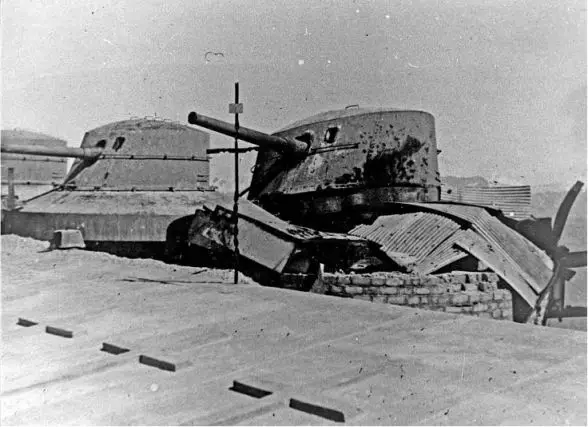
A disabled turret of the Chaberton
After this short-lived campaign, the fort saw no more activities.
The garrison abbandoned it was abandoned after the armistice of September 1943. At the end of 1944 it was re-occupied by units of the Italian Social Republic. It was definitively abandoned after the surrender of Germany in 1945.
The peace treaty of 1947 gave the strip of land where Chaberton lies to France.
Source
Dassano, F., & Min, M. A. (1999). La battaglia dello Chaberton. STORIA MILITARE, p. 4-13.